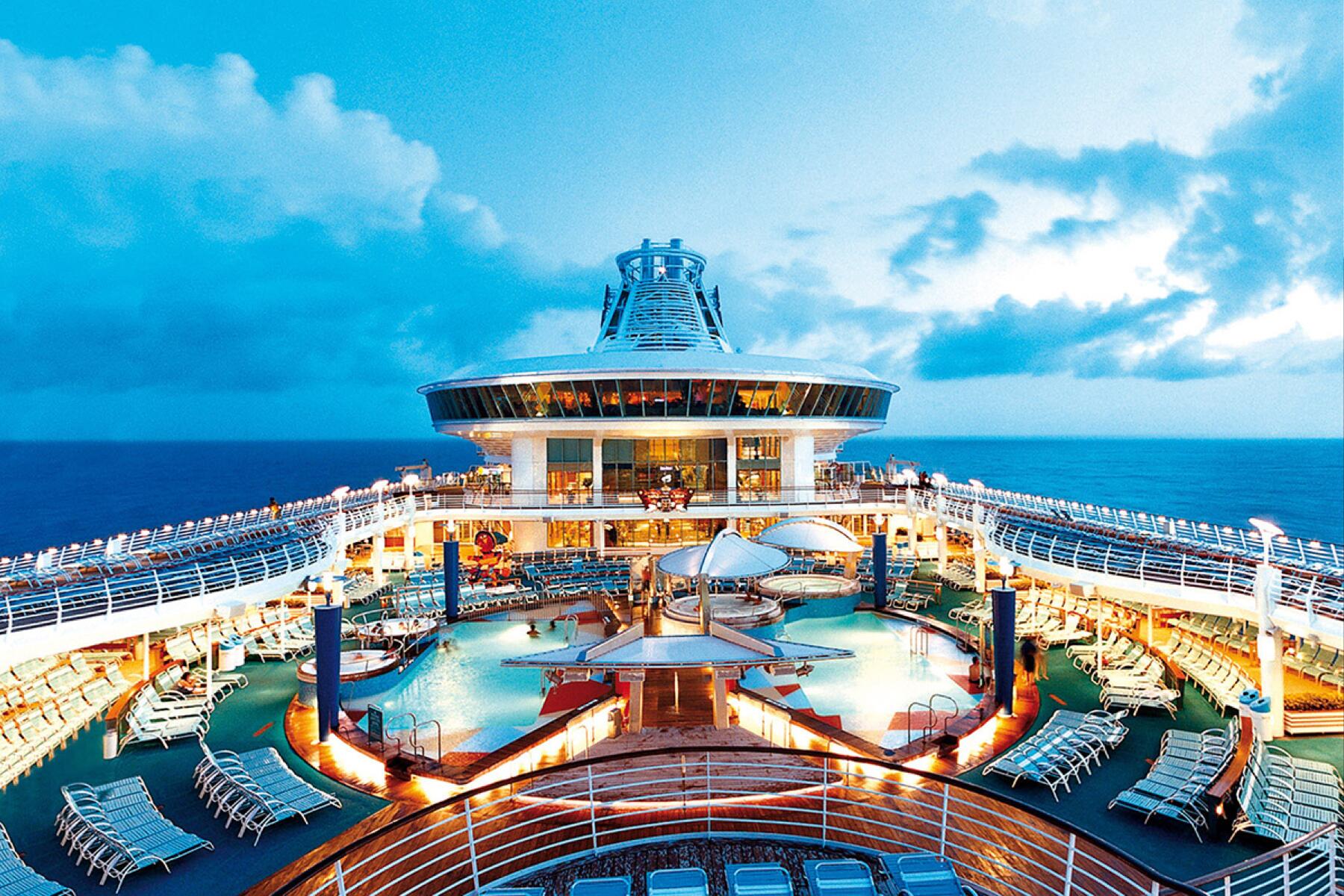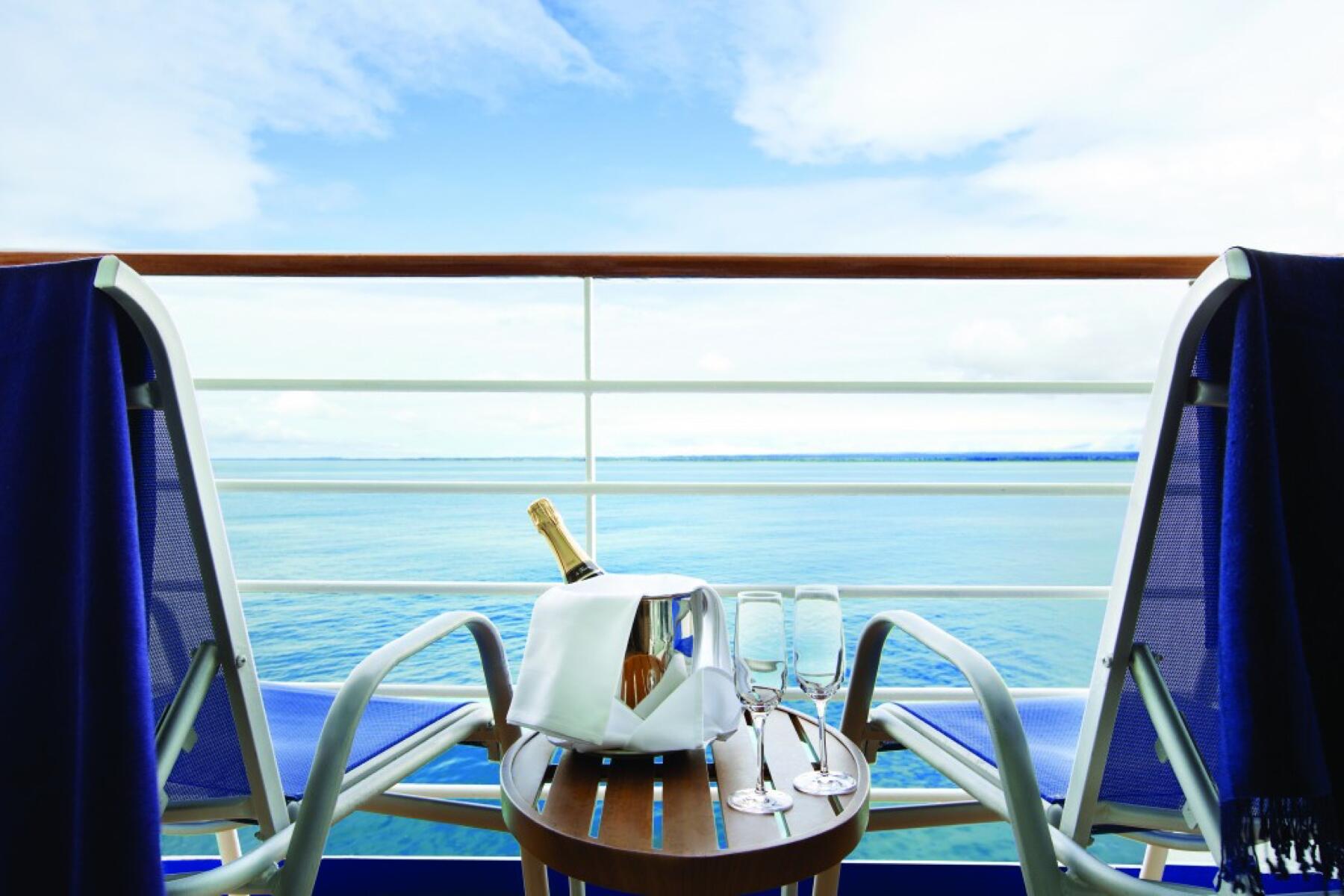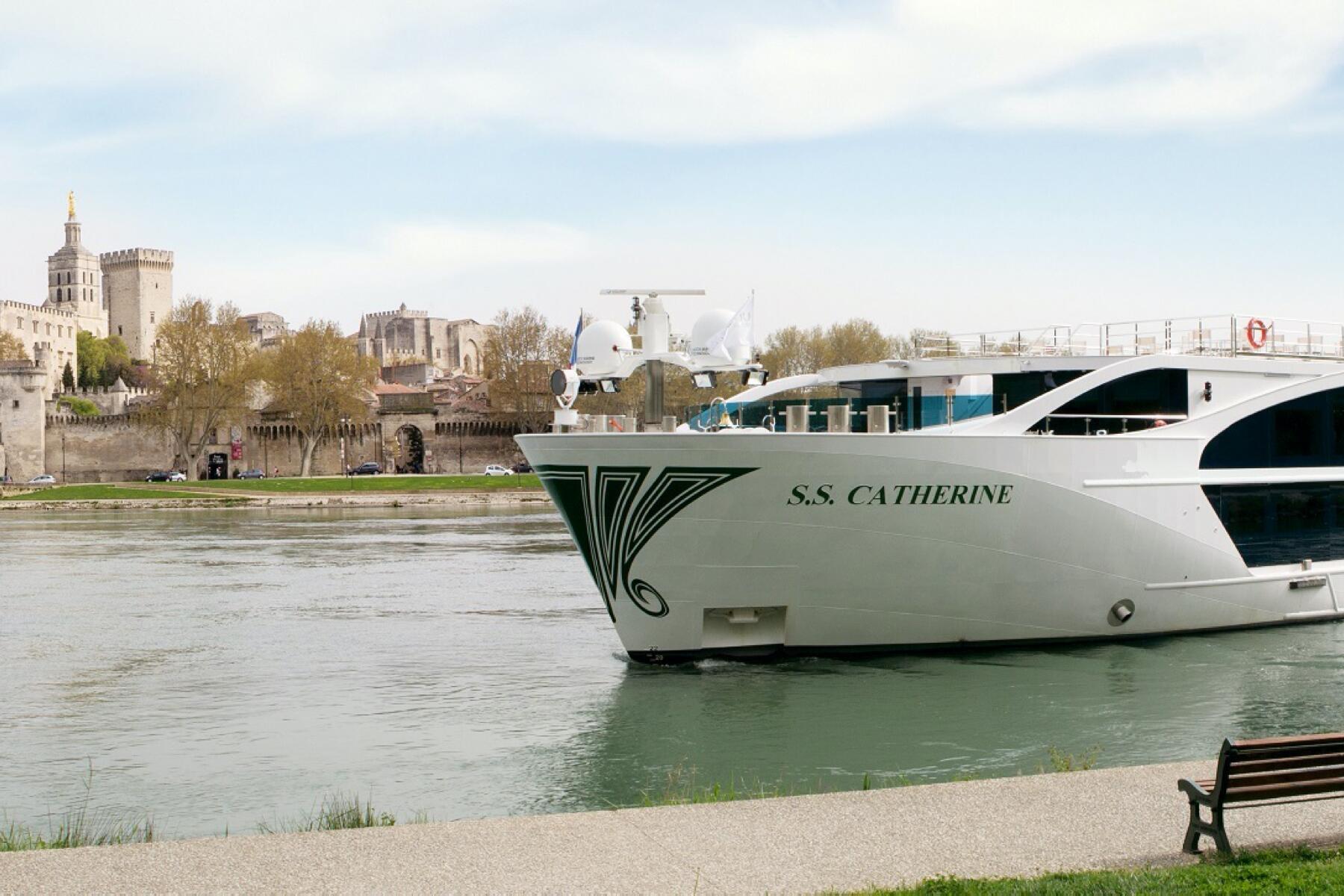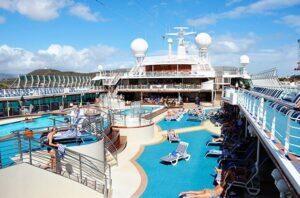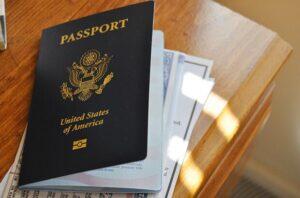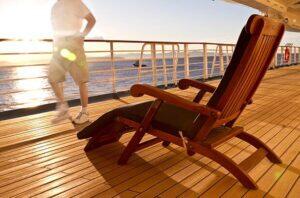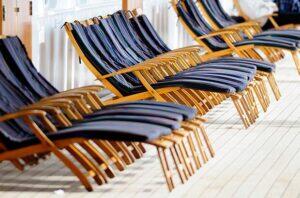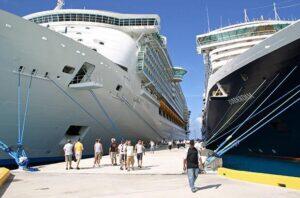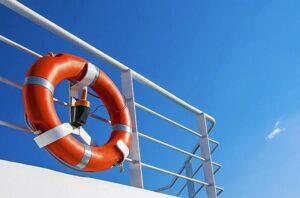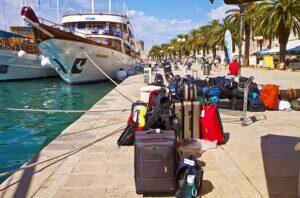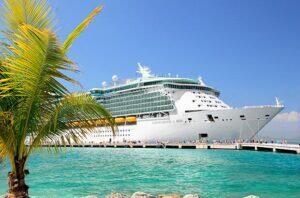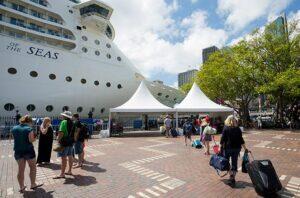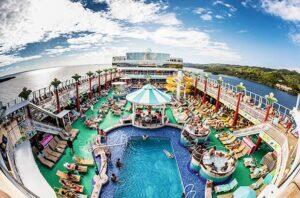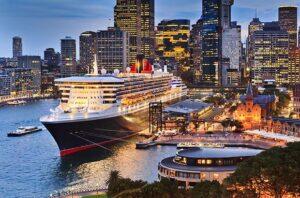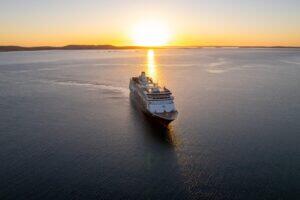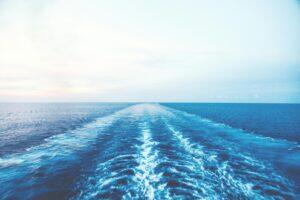Cruise Lines by Type
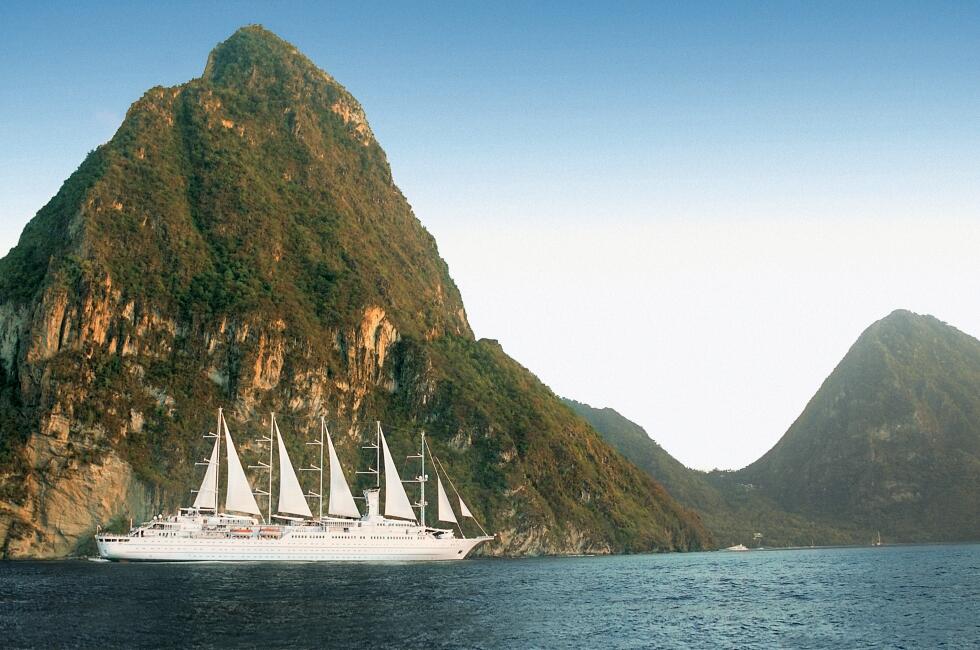
Just as cruise ships differ by size, the types of cruise lines themselves can also vary greatly in style.
Contents
Each cruise line has a unique personality that will appeal to different lifestyles. Selecting the right one to match your personal preferences can mean the difference between struggling with unmet expectations and enjoying the vacation of a lifetime. Some of the differences are subtle, but today’s cruise lines largely fall into three basic categories: mainstream, premium, and luxury. There are also a couple of secondary categories to consider, including river/barge and specialty cruise lines.
Contents
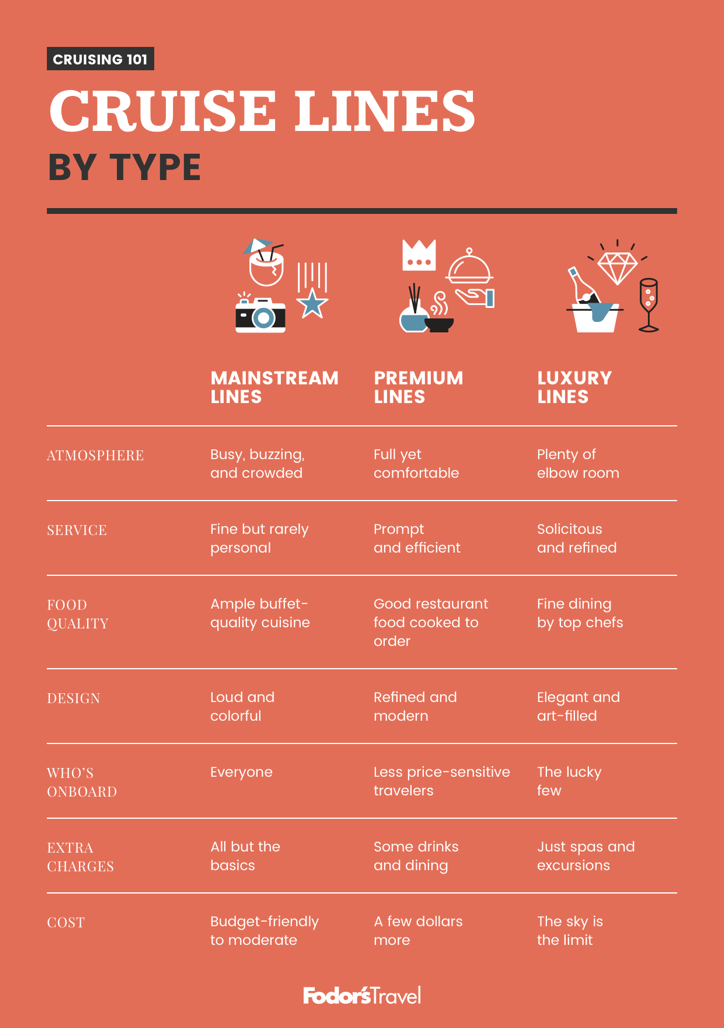
Mainstream Ocean Cruise Lines
These are the contemporary cruise lines with massive ships that offer something—and more often, many things—for just about everyone, from multiple pools to high-energy shows to bingo. Mainstream cruise lines account for the mass appeal of cruise vacations, and attract the most passengers. Ships tend to be the biggest at sea, carrying the highest number of cruisers. Ideal for families, these cruise lines offer some of the most extensive programs for children and teens.
INSIDER TIPMainstream cruise lines are ideal for anyone young or old who is looking for a fun and exhilarating vacation.
-
- Most mainstream ships are large and full-featured.
- Lines at buffets and popular venues are common.
- Facilities for kids are extensive, and families common, especially during school holidays.
- Multiple pool and recreation areas help spread out passengers.
- Food (even in sit-down restaurants) is mass-produced, except at some extra-charge venues.
- These lines can be budget-friendly, but expect a lot of extra charges.
Premium Ocean Cruise Lines
Ships in premium fleets have a lot in common with those in mainstream lines. They’re just a little more: there’s a more refined atmosphere, more gracious surroundings, and more attentive service. Ships tend to be newer midsize to large vessels that carry fewer passengers than mainstream ships and have a more spacious feel. Even the onboard decor may be a bit more glamorous and subtle than on a mainstream line.
INSIDER TIPFamilies will feel welcome on a premium line, but passengers tend to be a bit older, especially on longer itineraries.
-
- More space may be set aside for adults-only or quiet areas than on mainstream ships.
- Food quality is a higher even in included dining rooms than on mainstream vessels.
- More lines offer cruises longer than seven days.
- Cabins are a bit more plush than those on mainstream ships but may not be much larger.
- There are still some extra-charge options, and drinks are not usually included.
- Most ships offer inside cabins for those on lower budgets.
Luxury Ocean Cruise Lines
The most deluxe lines tout vessels that range from megayachts (for only a hundred or so privileged guests) to midsize ships, which are considered large for this category. You can expect to be welcomed as a valued guest and treated to all the courtesies and comforts you would expect at any five-star resort. Space is often so abundant that you might wonder where all the other passengers are hiding. Top international chefs are tapped for their culinary expertise in designing menus to please the palate.
INSIDER TIPYour spacious stateroom is more likely a suite; bath toiletries will be designer; and an all-inclusive experience reigns.
-
- Lower-category cabins are larger and more comfortable than on cheaper ships.
- Luxury lines have the lowest passenger-to-crew ratios, so service is more personal.
- Longer sailings are common.
- Drinks are almost always included in fares, and extra charges are uncommon.
- Fewer cabins in the same-size ship means more room for passengers.
- Passengers tend to be older; younger kids are not always welcome.
River Cruise Lines
The possibilities for river cruising, with its enjoyable slow-rhythm pace of exploration, have grown exponentially over the last decade. An even smaller segment of the market also provides intimate barge cruises on canals and smaller waterways. River-cruise lines attract a mature clientele that’s largely couple-oriented; it’s rare to find families on board (the boats don’t offer much in the way of entertainment or space for kids and teens). Travelers on river-cruise lines typically enjoy exploring at a relaxed pace, and appreciate that even guided excursions are provided for and neatly bundled into the rates.
INSIDER TIPRiverboats usually carry fewer than 200 passengers, while barges carry just 6 to 20 guests.
-
- Most riverboats come equipped with little more than a main dining room, lounge, and sundeck.
- Onboard activities and entertainment are not a main focus, so don’t expect much more than a piano player and occasional local entertainer.
- Staterooms are typically smaller and more basic in their appointments than those found on board oceangoing vessels; few can accommodate a third passenger.
- Itineraries are port-intensive, and excursions are often included in the rates.
- Mealtimes are set, and wine, beer, and soft drinks are generally included with meals.
- River cruisers are generally very stable, and most passengers do not feel motion.
Specialty Cruise Lines
Specialty cruise lines fall outside of the major cruise categories to encompass more unique and adventurous cruising options, like tall ship sailings or expedition cruises. Tall ships deliver on the sea-lover’s fantasy of billowing white sails and setting off into the sunset. Expedition ships might be outfitted with icebreaking hulls, or special sonar equipment to look out for whales, and often require tendering by Zodiac boats in far-flung locales; they always carry a wide range of specialists to run programs suited to the expedition: photographers, wildlife biologists, anthropologists, and others. Specialty cruise ships are small by design, and rarely accommodate more than 200 like-minded guests. These types of sailings attract independent and adventurous types, especially nature enthusiasts and photography buffs. With their small ship size, these cruises are perfect for those looking to meet new friends. During school holidays, you’ll likely to find families on board, too.
INSIDER TIPChoose a specialty cruise line if you are looking for an experience, or want to visit an exotic locale, more than for the cruise itself.
-
- The level of onboard comforts can vary widely.
- Smaller ships might be real sailboats.
- Cabins are typically basic in their furnishings and amenities.
- Expedition cruises are usually staffed with specialists.
- Dining is an informal affair, with fixed seating times.
- Just because ships are small and basic doesn’t mean rates are low.

